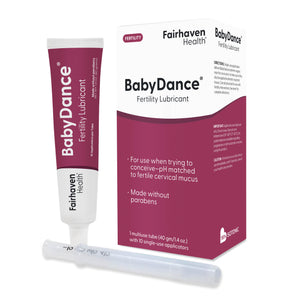Fertility Charting allows you to chart and predict ovulation based on three different predictive methods...
> Changes in your body temperature (BBT)
> Cervical mucus analysis
Fertility Charting and Ovulation Prediction
Fertility charting allows you to predict ovulation, pinpoint your most fertile time in your cycle, and increase your chances of becoming pregnant. Looking at several physiological variables, a woman can learn to identify the days when she will most likely ovulate - the best time to conceive a baby.
Typically, a woman is fertile for only a handful of days during each menstrual cycle. And because the unfertilized egg has a short life-span of just one day, timing intercourse is central to successful conception. For many couples, 'guesswork' is not enough when it comes to timing, and fertility charting allows us to a understand our own fertility patterns - and then to predict our 'prime time' for conception.
For couples confronted with challenges in conceiving a child, fertility charting is a powerful tool. Many physicians and naturopaths strongly advocate fertility charting as it is completely safe, natural, and does not rely on drugs or invasive medical procedures. In addition, women come to better understand their own bodies and cycles - and predicting ovulation is no longer a mystery.
To chart fertility, all you need is a 'calendar' or fertility chart, a basal thermometer, and a little patience to learn the techniques of 'listening' to your body. Once you learn the methods below, you can combine them in building a comprehensive fertility chart.
The Three Methods of Fertility Charting
Fertility charting requires that you understand the basic dynamic of your Menstrual Cycle. Once you understand these patterns and changes, you can begin to anticipate ovulation through fertility charting - the combination of three distinct predictive methods:
1. The Basal Body Temperature (BBT) Method
2. The Cervical Mucus Method
3. The Calendar Method
To optimize results in ovulation prediction, fertility charting should combine the temperature method (BBT), the cervical mucus method, and the calendar method. Here, we can learn to identify our most fertile phases by observing changes in our basal body temperature, by observing the increase and changes in cervical fluid (as well as the position of the cervix), and by grasping general fertility patterns through maintaining a fertility calendar. The only tools you need are pen, a fertility chart and a basal thermometer.
Basal Body Temperature: The BBT method requires you to monitor your temperature every morning. Body temperature changes are due to the increase of progesterone in your system. At the onset of ovulation, your body temperature will rise between 0.4°F and 0.8°F. The physiological purpose of the temperature increase is to create a warmer, more fertile environment for the fertilized egg. This temperature increase will last from ovulation until your next period. To read more about charting your Basal Body Temperature, click here.
The Cervical Mucus Method: By examining changes in your cervical mucus - as well as the increase and decrease of mucus present - you can predict your fertility patterns and the general onset of ovulation. Observation must take place from the beginning of your cycle through ovulation. During menstruation, the presence of cervical fluid will be decreased. Prior to ovulation, cervical mucus will increase and become clear and slippery - indicating fertility. (There are products, such as FertileCM® For Women, which can help to increase the quantity and quality of cervical mucus you produce.) To learn more about the Cervical Mucus Method, click here.
The Calendar Method: The calendar method allows you to chart your fertility and recognize general patterns in fertile and infertile phases. The calendar method involves keeping a written record and helps you predict ovulation by understanding the history of your menstrual cycles. To learn more about the Calendar Method, click here.
See Also: Creating A Fertility Chart
See Also: Ovulation Prediction and Timing Intercourse
`







